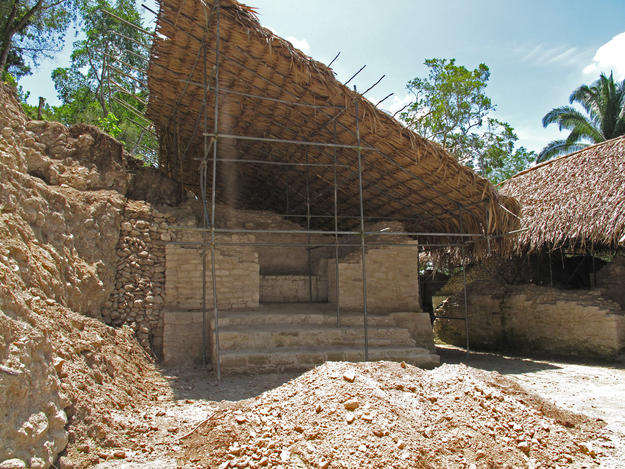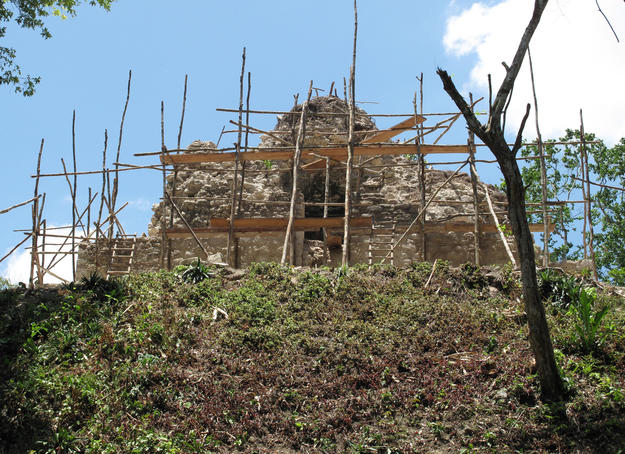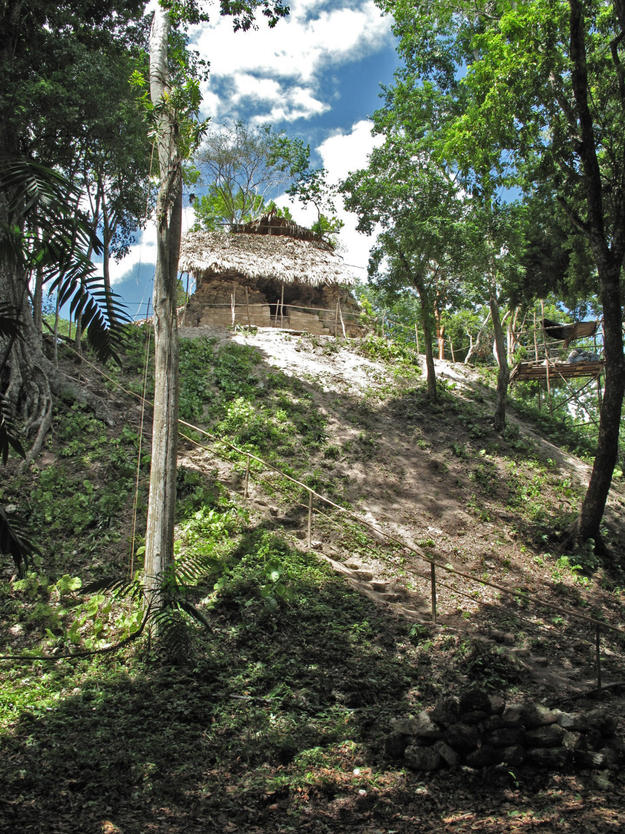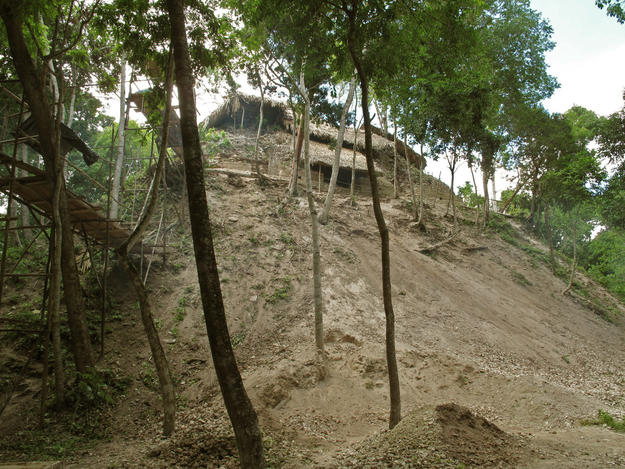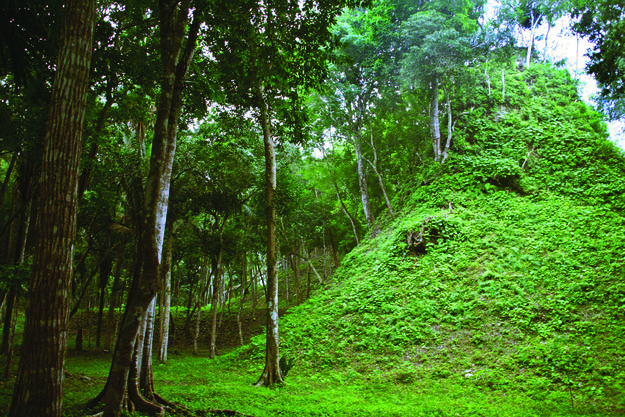Naranjo
Naranjo is the second largest Maya city in Guatemala after Tikal. Among its preserved monuments are pyramids, ball courts, observatories, a hieroglyphic stairway, and stone palaces filled with carved sculpture and polychrome stucco. Surviving stele and altars narrate the history of an ancient pilgrimage route that included Naranjo and other cities in modern-day Guatemala and Belize. This vast city developed between 500 B.C. and A.D. 950, although the main period of construction took place during the Late Classic period (A.D. 600-900). Naranjo’s 389 buildings are organized into six acropolises. Additionally, there are 900 peripheral structures, attesting to a wealth amassed from numerous military victories. Under the rule of seventh-century warrior-queen Wak Chanil Ahau, the city’s political influence vastly increased, but in the tenth century, the settlement was abandoned. Naranjo has been part of the Yaxha-Nakum-Naranjo National Park since 2004.
The Watch served to publicize the historic value of the site
Soon after a conservation effort was launched in 2002, archaeologists realized the magnitude of the work required to document, conserve, protect, and interpret the site. In 2006, Naranjo was placed on the World Monuments Watch. The resulting media and regional attention served to publicize the historic value of the site and the need to look comprehensibly at architectural and natural conservation, and environmental education. Documentation, measures to prevent looting, site security improvements, tourism development, and sculptural conservation and replication, when appropriate, were deemed necessary. A sculptural museum in Melchor de Mencos was established. WMF helped advance the flora conservation program by assisting in the documentation of endangered plant species. In 2008, the U.S. State Department’s Ambassadors Fund for Cultural Preservation supported the conservation of the Temple of the Hieroglyphic Staircase. Since 2002, when Naranjo was placed on Guatemala’s Tentative List for World Heritage consideration, the Ministry of Culture and Sport has been investing considerable resources in the protection and conservation of the site.
The ancient city has suffered from centuries of neglect, forest fires, erosion, demographic pressures, insufficient security, and structural instability, and faced a wave of lootings in the 1960s and 70s. WMF’s work to reinvigorate conservation and documentation efforts provides hope, and a model for future conservation programs at many other historic sites in the region struggling with the same problems.

